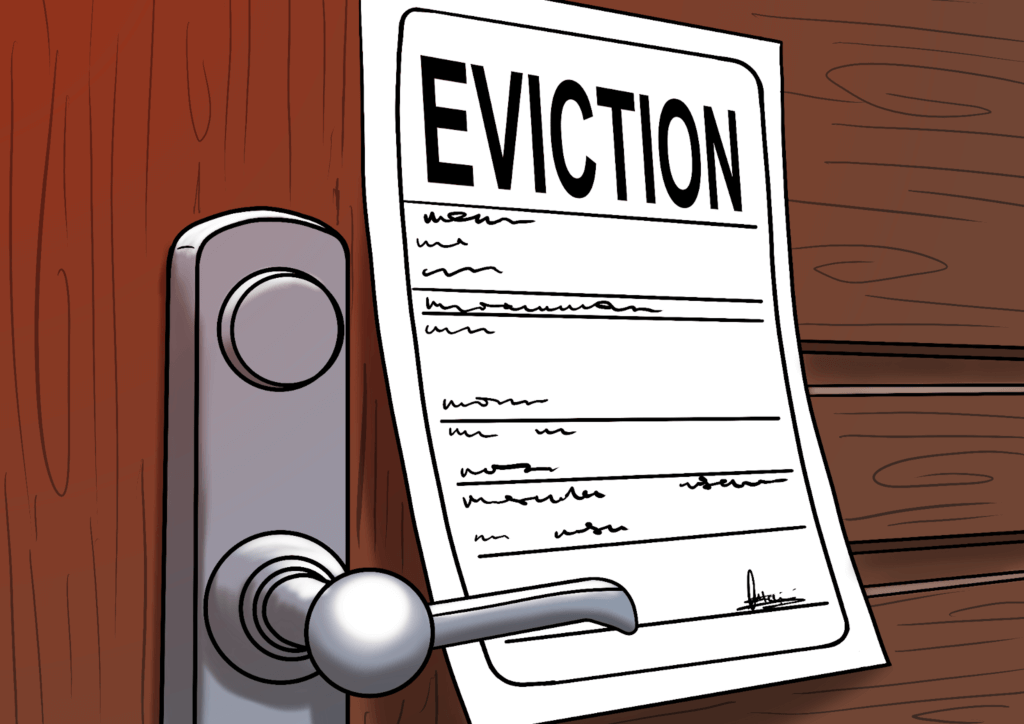- Blogs
- /
- How to Unlock Credit Freeze Easily Using 2 Methods
How to Unlock Credit Freeze Easily Using 2 Methods

Summary
A credit freeze is a powerful tool for safeguarding your identity. It also protects against potential financial fraud. However, you must understand how to unlock credit freeze to manage your credit effectively.
Unlocking your credit freeze can provide flexibility. It’s helpful when applying for new credit or loans. You can easily lift the freeze and regain control over your credit history by following simple steps. Provide the necessary information.
We will provide step-by-step instructions on contacting the relevant services. We will also cover navigating their websites and submitting the required documents. With our expert guidance, you’ll have all the knowledge on how to unlock credit freeze. Then, you can access new financial opportunities.
Key Takeaways
- A credit freeze restricts access to your credit report. This enhances security. It prevents unauthorized individuals from opening new accounts in your name.
- It adds an extra layer of protection against identity theft. It requires permission before anyone can view your credit history.
- Security freezes, and credit locks serve the same purpose. Yet, they differ in implementation and management.
- State laws govern security freezes and may involve fees. Credit locks are often provided directly by credit bureaus. They may offer more convenience for online or mobile app management.
- Unlocking a credit freeze for adults involves providing personal information. It may also include paying fees based on state laws. Specific credit bureau requirements may also apply.
- Unlocking a minor’s credit freeze requires extra documentation. This is because of legal considerations and to protect their financial future.
What are Credit Freezes?

Definition and Purpose
A credit freeze is a security measure restricting access to your credit report. This makes it difficult for unauthorized individuals to open new accounts in your name. Its purpose is to enhance security and prevent identity theft.
When you place a credit freeze on your account, potential lenders or creditors cannot view your credit history unless you permit them. This adds an extra layer of protection. It prevents fraudsters from using your personal information to open fraudulent accounts.
Unlocking a credit freeze allows legitimate access to your credit report when needed. For example, the lender must evaluate your creditworthiness if you apply for a loan or a new credit card. You can let them view your credit information by temporarily lifting the freeze.
Security Freeze vs. Credit Lock
Security freezes and credit locks serve the same purpose. They protect your credit report. But there are some differences between the two.
State laws govern a security freeze. They may involve fees, depending on your location. The three major credit bureaus (Equifax, Experian, and TransUnion) will be notified when you place a security freeze. They will be required to restrict access to your credit report. You may need to contact each bureau individually to unlock a security freeze.
On the other hand, credit bureaus usually offer a credit lock directly as an additional service. It functions similarly to a security freeze. It may provide more convenience in managing it online. You can also control it through mobile apps provided by the bureaus. You can often unlock a credit lock through these platforms. You don’t have to contact each bureau separately.
Both options provide similar protection against unauthorized access to your credit report. Still, it’s essential to understand the specific requirements and procedures. Before deciding, know which option suits you best.
Impact of Data Breaches
Data breaches have become increasingly common in today’s digital age. These incidents involve unauthorized access to sensitive personal information, such as social security numbers, addresses, and financial details. When a data breach occurs, it exposes individuals to a higher risk of identity theft and fraud.
If you have been affected by a data breach, unlocking your credit freeze can help reduce potential damage. By allowing authorized parties to access your credit report, you enable them to monitor suspicious activity more closely. This can include keeping an eye out for new accounts opened in your name. It would help if you watched for any unusual changes in your credit history.
Taking proactive steps to unlock your credit freeze after a data breach is crucial. It lets you minimize compromised data’s impact and control your financial well-being. While temporarily unlocking the freeze may require effort and time, protecting yourself from potential fraudulent activities is necessary.
Fraud Alert Inclusion
Placing a fraud alert on your credit report is an extra layer of protection against identity theft. When unlocking a credit freeze, it’s essential to consider any existing fraud alerts. Manage them accordingly.
If you have placed a fraud alert on your credit report before, you may need to remove or update it when unlocking your credit freeze. This ensures that the appropriate security measures are in place. It also makes potential creditors or lenders aware of the change in your credit status.
Differences Between Placing a Credit Freeze and Unlocking it
Understanding the differences between placing a credit freeze and unlocking it is essential. While both measures protect your credit, they serve distinct purposes.
A credit freeze restricts access to your credit report entirely. It locks your information, preventing anyone from accessing it without your explicit permission. This can be especially useful. It is helpful if you suspect someone has obtained your personal information. They may try to open accounts or apply for loans in your name.
But, unlocking a credit freeze grants temporary or permanent access to your credit report. When you need authorized parties, such as lenders or employers, to view your information for legitimate purposes, you can unlock the freeze temporarily. You can reapply the freeze once the authorized party has completed their review. This will continue to protect you.
Understanding these distinctions is crucial in managing and utilizing these protective measures effectively. By knowing when and how to place freezes and unlock them when necessary, you can maintain control over who has access to your sensitive financial data.
Unlocking Your Credit Freeze
1. Process for Adults
As an adult, unlocking a credit freeze is straightforward. It involves verifying your identity with the respective credit bureaus. Each credit bureau has its specific procedure for unlocking a credit freeze. Following the correct steps is essential to ensure a smooth and secure experience.
To unlock your credit freeze, you must provide personal information. This information includes your name, address, social security number, and date of birth. This information helps the credit bureaus confirm your identity. It also prevents unauthorized access to your credit report.
In addition to providing personal information, there may be fees for unlocking your credit freeze. The costs vary depending on the state you reside in. They also vary based on the specific requirements of each credit bureau. Review the fee structure beforehand. It’s essential for preparing for potential costs.
Once you have completed the necessary steps and provided all required information, the credit bureau will remove the freeze from your credit report. Creditors or lenders can then access your credit history when you apply for new credit or loans.
2. Protecting Minors
It’s crucial to remember that minors can also be vulnerable to identity theft. Unlocking a minor’s credit freeze requires more steps than adults. This is due to legal considerations and the need to protect their financial future.
To unlock a minor’s credit freeze, you must provide documentation that proves legal guardianship. Alternatively, you can verify the minor’s identity through other means. This could include birth certificates, social security cards, or court orders. These documents establish control.
These additional steps are in place to protect minors from potential fraud or misuse of their personal information. When unlocking a minor’s credit freeze, take these precautions to safeguard their financial well-being. It also ensures they start their adult lives with a clean slate.
How to Unlock Credit Freeze: Methods to Use

1. Online Unfreeze Methods
Unlocking a credit freeze online is a convenient way to regain control of your credit report. It is also efficient. To begin, visit the credit bureau website where you placed the freeze. Once there, you will typically be prompted to create an account. You do this by providing some personal information.
Creating an account helps ensure the security of your information. It also allows you to access your frozen credit report. After setting up your account, you may need to answer security questions. This is to verify your identity further. These questions are designed to confirm that it is indeed you who wants to unfreeze your credit report.
You can unfreeze your accounts online. You don’t need to make phone calls or visit physical locations. You can use technology’s convenience. It saves time and effort as you can access and manage your credit freeze from home.
2. Phone Unfreeze Methods
If you prefer direct communication and personalized assistance, unlocking your credit report over the phone may be the right choice. To start, contact the credit bureau’s customer service line. You placed the freeze there.
When calling, be prepared to provide the necessary identification details. This includes your name, address, and social security number. The representative may ask for other information. This step ensures that only authorized individuals can access and modify their frozen credit reports.
Speaking with a representative offers several advantages. They can guide you through each step of unfreezing your credit report. They can address any concerns or questions. Their expertise can help streamline the process. It can also provide reassurance during what might otherwise be a complex task.
Phone unfreeze methods allow immediate feedback and resolution if issues arise during unlocking. The representative can quickly identify potential problems or discrepancies in real time. They can also assist in resolving them promptly.
Special Cases Handling
1. Incapacitated Adults
Unlocking a credit freeze for incapacitated adults requires special considerations and procedures to protect their financial interests. In these cases, you may need legal documentation or proof of guardianship to unlock the credit freeze.
Unlocking a credit freeze for incapacitated adults is designed to comply with regulations. It is also designed to safeguard their financial well-being. By following the appropriate steps, individuals can ensure they have authorization to access their credit information. This allows them to make informed financial decisions.
It is crucial to consult legal professionals or relevant authorities when dealing with the credit freeze of an incapacitated adult. They can guide you on the requirements and documents needed to unlock the credit freeze successfully.
2. Child ID Theft Concerns
Identity theft can affect anyone, including children. So, it is essential to understand how to unlock a child’s credit freeze if necessary. Unlocking a child’s credit freeze typically involves more steps than unlocking an adult’s credit freeze.
Legal guardians must provide proof of their relationship or guardianship to unlock a child’s credit freeze. This could include documents such as birth certificates or court orders. It could also include other legally recognized forms of identification.
Providing documentation that verifies the child’s identity may also be required. This ensures that only authorized individuals can access and modify the child’s credit information.
Taking proactive measures to unlock a child’s credit freeze is crucial. This will protect their future financial stability. By doing so, parents or legal guardians can prevent potential identity theft issues. This can save their child’s financial well-being in the long run.
Parents should monitor any suspicious activities related to their child’s personal information. Regularly review bank statements and monitor online accounts. This can help detect unauthorized activity promptly.
If parents suspect their child has become a victim of identity theft, they should immediately contact law enforcement agencies. They should also report the incident. Quick action can reduce theft damage. It can also prevent further harm to the child’s credit history.
Managing Your Credit Freeze
Online vs. Phone
You have the option to do it either online or over the phone. Many credit bureaus provide online methods for unlocking a credit freeze, which can be convenient and efficient. You can temporarily grant your credit report access with just a few clicks.
On the other hand, unlocking a credit freeze over the phone may require speaking with a representative. You’ll need to provide the necessary information. This method may involve more steps and longer wait times. Still, it offers an alternative for those who prefer speaking directly with someone.
The choice between online and phone methods ultimately depends on personal preference and ease of access. If you are comfortable navigating online platforms and prefer a quick solution, then unlocking your credit freeze online might be the way to go. However, that option is also available. If you feel more comfortable talking to someone, explain your situation over the phone.
Accessing Reports
Unlocking a credit freeze allows authorized parties to access your credit report. These may include lenders, creditors, and other entities. These parties may need to review your credit history before approving applications or extending credit. You facilitate smooth financial transactions by temporarily lifting the freeze on your report.
For example, suppose you are applying for a new credit card or seeking banking services from a financial technology company (fintech). In that case, they will likely need access to your credit report to assess your eligibility. Unlocking your credit freeze permits them to view this information without any obstacles.
You control who can view your sensitive financial data by granting temporary access instead of permanently removing the freeze. This allows legitimate inquiries when needed.
Permissible Purpose
Unlocking a credit freeze requires having a permissible purpose for doing so. Permissible purposes include applying for new lines of credit or employment verification. Understanding an acceptable reason for unlocking a credit freeze is vital to ensure compliance with regulations and protect your privacy.
For instance, if you are applying for a credit card or loan, you would have a permissible purpose to unlock your credit freeze. However, simply checking your credit report out of curiosity may not be a valid reason.
When unlocking your credit freeze, it’s crucial to provide accurate information about the purpose of the opening. This helps prevent unauthorized access to your credit report. It ensures that only legitimate inquiries are made.
Lifting a Credit Freeze

1. Temporary Lifts
A credit freeze provides an essential layer of protection for your credit files and history. But, there may be instances where you need to lift the freeze to access your credit information temporarily. A temporary lift allows you to unlock the credit freeze for a specific time. This provides flexibility while maintaining security.
When applying for loans or opening new accounts within a specific timeframe, temporarily unlocking a credit freeze can be extremely useful. Lifting the temporary freeze allows potential creditors or lenders to access your credit file. They can then make informed decisions based on your financial history.
You must contact each of the three major credit bureaus to request a temporary lift. The bureaus are Equifax, Experian, and TransUnion. They will guide you through the process and explain how long the temporary lift will last. It is important to note that there may be fees associated with temporary lifts. This depends on state laws and individual credit bureaus.
Effectively managing temporary lifts requires careful planning and organization. It is crucial to keep track of when the temporary lift expires. You can reinstate the freeze at its conclusion. This ensures that your credit remains protected again after the specified period ends.
2. Permanent Removal
A temporary lift provides short-term access to your credit files. You may no longer need a credit freeze for protection. Unlocking a credit freeze removes the restriction on accessing your credit report altogether.
You typically need to permanently remove a freeze after significant financial transactions. Or, you might decide an ongoing freeze is no longer needed for your circumstances. Permanently unlocking your credit files opens up opportunities for new accounts. You also ensure easy access for potential creditors or lenders.
Contact the three major credit bureaus directly to remove a credit freeze permanently. They will guide you through the necessary steps to unlock your credit files permanently.
It is crucial to understand the process for permanently unlocking a credit freeze. It can help manage your long-term financial goals. Familiarize yourself with each credit bureau’s specific requirements and procedures. This will ensure a smooth transition from a frozen credit file to an accessible one.
3. Cost and Timing
Consider any costs and timing before deciding to unlock a credit freeze. Unlocking a credit freeze may involve fees. This depends on state laws and individual credit bureaus.
Before initiating any requests to lift or remove a credit freeze, take the time to research the potential costs involved. This will allow you to budget accordingly. It will help you avoid unexpected expenses that may arise during the process.
Timing is another crucial factor. The duration it takes for your request to be processed can vary. It depends on several factors, such as the volume of requests the credit bureaus handle. Some requests may be processed immediately, while others could take a few days.
Plan and submit your request well before any deadlines or time-sensitive financial transactions. This will ensure you have enough time for the unlocking process. By allowing ample time, you can avoid unnecessary delays or complications. Last-minute requests can cause problems.
Major Credit Bureaus Procedures
1. Equifax Guidelines
Equifax is one of the major credit bureaus. They have specific guidelines for unlocking a credit freeze. You can follow their recommended methods to unlock your credit freeze with Equifax. These may include online or phone options. By adhering to Equifax’s guidelines, you can ensure a smooth and hassle-free process.
It is essential to familiarize yourself with their requirements. This will help you navigate the unlocking process effectively. It will also help you avoid unnecessary delays or complications. You can promptly provide the necessary information and documentation. This requires understanding what Equifax expects from you.
Equifax’s guidelines involve visiting their website. You would then follow the steps outlined for unlocking a credit freeze online. Or, they may provide a phone number that you can call to start the unlocking process. Whichever method they recommend, it is crucial to follow their instructions precisely.
You are more likely to succeed if you follow Equifax’s unlocking credit freeze guidelines. Their procedures have been designed to ensure your request is processed efficiently and accurately. Therefore, taking the time to understand their specific requirements will streamline the process. This will save you valuable time.
2. Experian Guidelines
Experian is another central credit bureau. It provides guidelines for unlocking a credit freeze. Like Equifax, Experian offers various methods for lifting your credit freeze. You can do it both online and over the phone.
To successfully unlock your credit freeze with Experian, it is crucial to adhere to their guidelines. These guidelines facilitate a smooth and efficient process while ensuring data security and accuracy.
Understanding Experian’s specific requirements will help simplify unlocking your credit freeze with them. It is critical to follow their instructions precisely. Whether they recommend using their website or calling their designated phone number.
Complying with Experian’s guidelines increases the likelihood of a successful credit freeze unlock. They have established procedures to protect your personal information. These procedures also allow you to regain access to your credit report. Therefore, familiarize yourself with Experian’s requirements before you start the unlocking process. It is essential.
3. TransUnion Guidelines
TransUnion is one of the major credit bureaus. It also provides guidelines for unlocking a credit freeze. They offer online and phone options for unlocking your credit freeze with their bureau.
It is crucial to comply with their guidelines to ensure a seamless experience when unlocking your credit freeze with TransUnion. Doing so allows you to navigate the process smoothly. It also helps minimize potential roadblocks or delays.
Familiarizing yourself with TransUnion’s specific requirements will simplify unlocking your credit freeze. Follow their instructions to unlock your credit report. You can do this by using their website or contacting them by phone.
Additional Resources and Measures
Identity Theft Prevention
Identity theft can have devastating consequences. It’s crucial to take proactive measures to protect yourself. Unlocking a credit freeze is a critical step in this process. You can implement additional measures to enhance your identity theft prevention strategy.
First and foremost, it’s essential to monitor your accounts regularly. You can detect suspicious or unauthorized charges by closely monitoring your bank statements, credit card transactions, and other financial activities. If you notice anything unusual, contact your financial institution immediately.
Using strong passwords is another critical aspect of identity theft prevention. Make sure your passwords are unique and complex. Combine letters (uppercase and lowercase), numbers, and special characters. Avoid using easily guessable information such as birthdates or family names. Consider using a password manager to store all your passwords securely.
Being cautious with personal information online is also vital. Be wary of sharing sensitive details like Social Security numbers or banking information through unsecured websites or emails. Phishing scams are prevalent. Be skeptical of requests for personal information that seem suspicious or unexpected.
You can significantly reduce the risk of falling victim to identity theft. To do this, combine multiple prevention strategies. For example, unlock a credit freeze and monitor accounts regularly. Use strong passwords and be cautious with personal information online.
Child ID Theft Resources
Child identity theft is a growing concern in today’s digital age. Parents and guardians must know the resources available to address this issue effectively.
Government agencies and nonprofit organizations offer various resources tailored to help with child identity theft concerns. These resources guide unlocking a child’s credit freeze. They also outline steps parents should take if their child’s identity is compromised.
When dealing with child ID theft concerns, it is essential to use reliable resources. These resources provide accurate information and support. Government agencies such as the Federal Trade Commission (FTC) and nonprofit organizations like the Identity Theft Resource Center (ITRC) are excellent sources of information. They offer step-by-step guidance on unlocking a child’s credit freeze. They provide comprehensive resources to help parents navigate the process.
Parents should also consider other protective measures for their children’s identities. This includes monitoring personal information, such as Social Security numbers. It also involves teaching them about online safety and privacy. By educating children about the importance of safeguarding their data, they can become active participants in preventing identity theft.
Final Thought
You’ve now become well-versed in the ins and outs of credit freezes. You have taken an essential step toward safeguarding your financial security by learning how to start, manage, and remove a credit freeze. Remember, a credit freeze is a powerful tool for protecting yourself from identity theft. It also prevents unauthorized access to your credit information.
Now that you have this knowledge, it’s time to take action. Don’t wait until it’s too late – take control of your credit by implementing a credit freeze today. Doing so lets you enjoy peace of mind, knowing your personal information is secure. Stay proactive and stay informed. Always be on the lookout for any suspicious activity. Continue to educate yourself on the latest security measures. Your financial well-being is worth it!
FAQs
1. How does a credit freeze work?
A credit freeze restricts access to your credit report. This makes it difficult for identity thieves to open new accounts in your name. It’s like putting a lock on your credit file that only you can unlock when needed.
2. Can I initiate a credit freeze online?
Yes, most major credit bureaus allow you to initiate a credit freeze online. Simply visit their websites and follow the instructions provided. It’s a quick and convenient way to protect your credit information.
3. How long does a credit freeze last?
A credit freeze remains in effect until you choose to lift it. There is no expiration date. It provides long-term protection against unauthorized access to your credit report.
4. What is the process of lifting a credit freeze?
To lift a credit freeze, contact each major credit bureau individually. You can do this temporarily or permanently. They will guide you through the necessary steps. This includes providing identification documents and paying any applicable fees.
5. Can I still get my free annual credit report with a frozen account?
Yes, you can still obtain your free annual credit report even if you have a frozen account. The law allows consumers to access their reports once every 12 months from the three major bureaus. This is true regardless of an active freeze on their file.
Our Latest Blogs:
FREE Strategy Session to Fix Your Credit Blogs / Sometimes, our credit scores aren’t as high as we want....

ThisIsJohnWilliams
FREE Strategy Session to Fix Your Credit Blogs / Facebook Twitter Linkedin Instagram Share Summary There isn’t a one-sized...

ThisIsJohnWilliams
FREE Strategy Session to Fix Your Credit Blogs / Facebook Twitter Linkedin Instagram Share Summary How long does an...

ThisIsJohnWilliams

ThisIsJohnWilliams

ThisIsJohnWilliams
FREE Strategy Session to Fix Your Credit Blogs / Facebook Twitter Linkedin Instagram Share Summary Over 300,000 Americans become...






